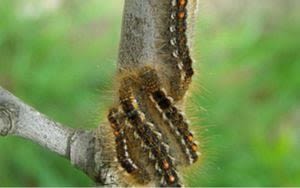Search results
People also ask
Do poison ivy leaves turn red?
Does Poison Ivy kill plants?
What do poison ivy leaves look like?
- Urushiol, The Oily Sappy Irritant
- Can Irritate Your Skin in All Seasons
- Types of Poison Ivy
- GeneratedCaptionsTabForHeroSec
Urushiol, the oily, sappy substance which causes an allergic reaction and rash, can stay on clothing and other surfaces for two years or longer unless it’s washed away. Urushiol is produced by every part of the poison ivy plant including its: 1. leaves 2. flowers 3. berries 4. roots 5. bark 6. branches
Poison ivy is associated with spring and summer because it’s more abundant at that time. However, don’t make the mistake of thinking that poison ivy only irritates your skin when it’s in full bloom. Most people are highly allergic to this plant throughout its entire growth cycle and in all seasons, including winter.
There are two types of poison ivy, Eastern and Western. Despite their names, you can find both scattered throughout the country, since they interbreed. Physical characteristics of the plant to keep in mind include: 1. Both types of poison ivy look similar and have three-leaf clusters on slender stems. 2. Their leaves can vary in color from green to...
Learn how to spot poison ivy leaves, flowers, berries, and roots in spring, summer, fall, and winter. Find out how to remove poison ivy safely and what to do if you get a rash.
- Corey Whelan
Aug 30, 2022 · To identify poison ivy, check to see if the plant you're looking at has clusters of 3 leaves, which is a defining characteristic of poison ivy. You can also look for white, translucent fruit on the plant, which is another sign that you're looking at poison ivy.
- 2.2M
- The best way to is to simply dig it up and dispose of it, though you should be extremely careful that you do not come into contact with the plant o...
- Poison ivy rashes cause your skin to swell and turn red, sometimes with blisters forming if there is a greater exposure or you are sensitive to it....
- You've got several options to kill poison ivy naturally, but the most effective methods involve digging it up. If you do decide to dig it up, you s...
News about Poison Ivy, Ticks, Minute Clinic
News about Poison Oak, symptoms, invasive plants
Also in the news
May 15, 2024 · Poison ivy rash is caused by an allergic reaction to an oily resin called urushiol (u-ROO-she-ol). This oil is in the leaves, stems and roots of poison ivy, poison oak and poison sumac. Wash your skin right away if you come into contact with this oil, unless you know you're not sensitive to it.
Learn the characteristics of poison ivy leaves, such as the number of leaflets, the shape, the color and the pattern. Find out how to get rid of poison ivy safely and effectively with tips and advice.
May 5, 2023 · Learn how to identify and avoid poisonous plants that cause an itchy skin rash. Find out what urushiol oil is, how it affects your skin and how to treat a poison ivy rash.




